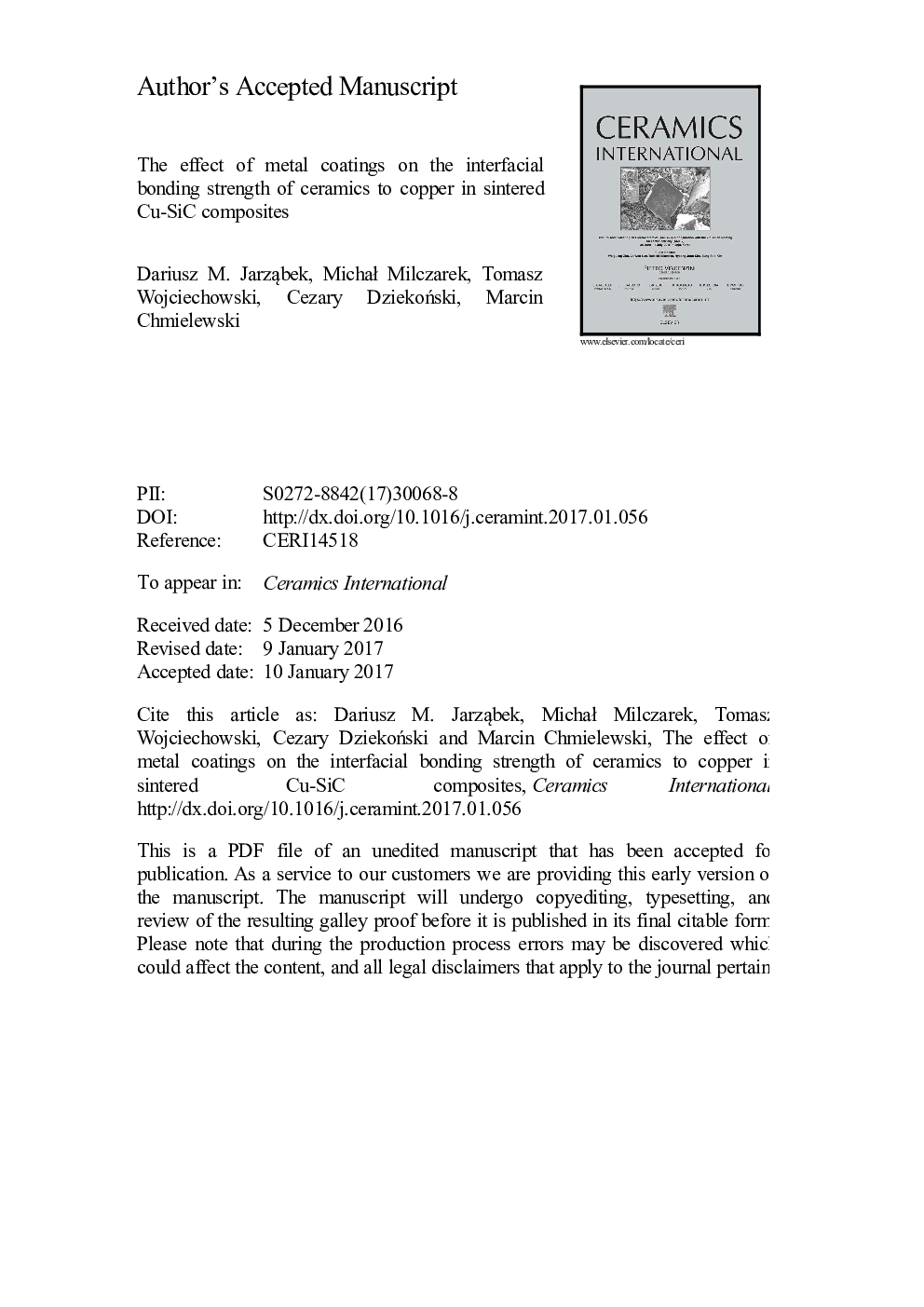| Article ID | Journal | Published Year | Pages | File Type |
|---|---|---|---|---|
| 5438668 | Ceramics International | 2017 | 25 Pages |
Abstract
Cu-SiC composites are very promising materials which have high thermal and electrical conductivity and may find many applications. Unfortunately, the main disadvantage of these materials is the dissolution of silicon in copper at elevated temperature, which significantly reduces their properties. In order to overcome this problem particles can be coated with a protective material before sintering. In this paper- the influence of three different metallic coatings on bonding strength were investigated. SiC particles were coated with tungsten, chromium or titanium. As reference a material with uncoated particles was prepared. The experiments were carried out with the use of microtensile tester. The highest increase in strength was observed in the case of chromium coating. On the other hand, the titanium coating, which was of very poor quality, decrease the bonding strength in comparison with uncoated particles. Furthermore, scanning electron and optical microscopes were used to determine the mechanism of debonding.
Keywords
Related Topics
Physical Sciences and Engineering
Materials Science
Ceramics and Composites
Authors
Dariusz M. JarzÄ
bek, MichaÅ Milczarek, Tomasz Wojciechowski, Cezary DziekoÅski, Marcin Chmielewski,
